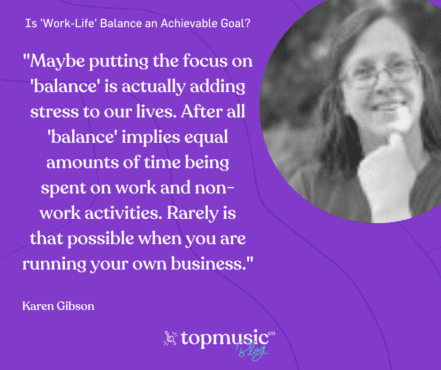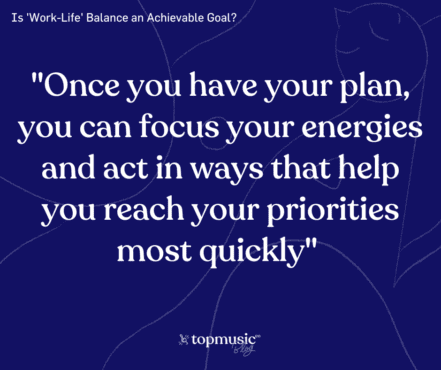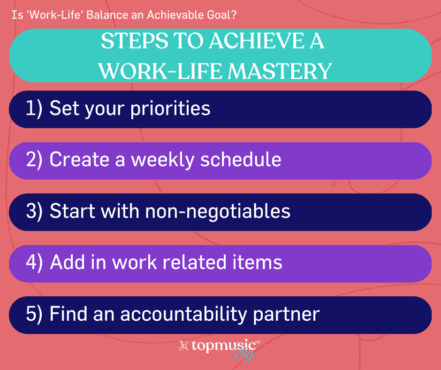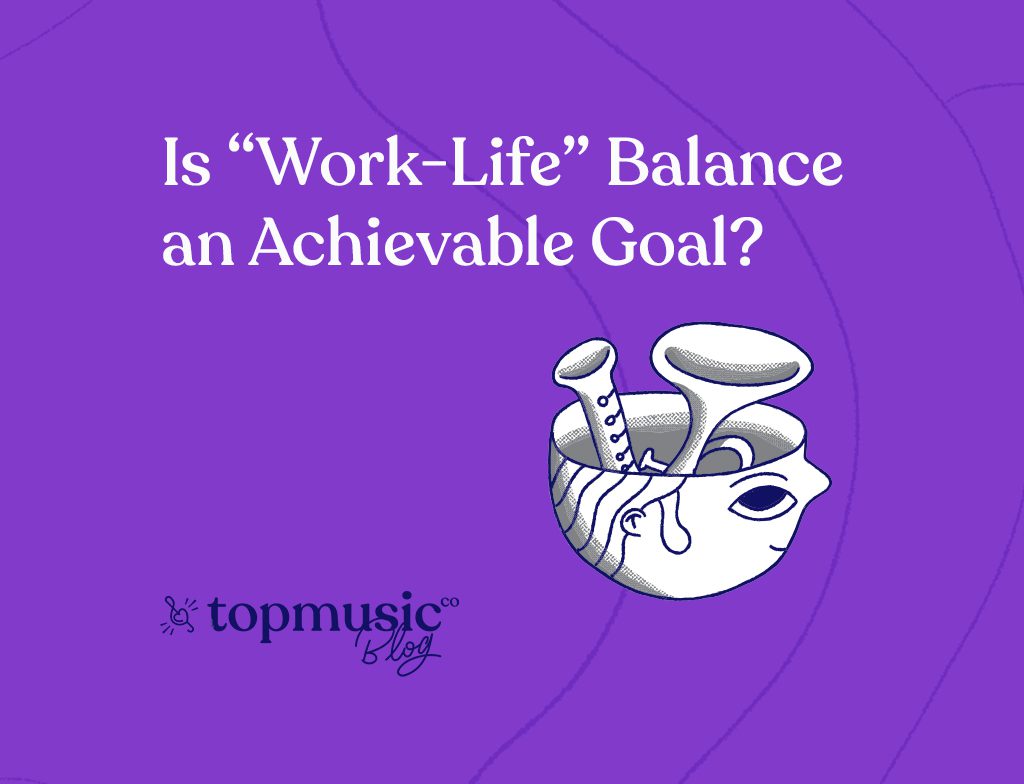Work-Life balance to some of us is a myth. Surely it’s not possible to have a balance between our working lives and our personal lives? If you’ve got it sorted, we admire you. If you’re always striving for different ways to ‘balance’ your life, keep reading!
TABLE OF CONTENTS:
The term ‘work-life balance’ is everywhere these days. But when you own your own business, it is easy to spend all of your time working on the business.
After all, there is always something that needs to be done, and there never seems to be enough hours in the day (especially if teaching piano is your primary source of income).
But maybe putting the focus on ‘balance’ is actually adding stress to our lives. After all, ‘balance’ implies equal amounts of time being spent on work and non-work activities. Rarely is that possible when you are running your own business, especially when the business is teaching.

This isn’t a term I’ve coined. ‘Work-Life Mastery’ is an idea from Craig Ballantyne of Early to Rise.
The premise is simple – ultimately we all have control over our schedules.
However, making that mental shift is easier said than done for most people.
Still, if you are unhappy with the overall direction of your life and the amount of time your business is taking up, you will want to consider going through these steps to find a work-life balance (or rather a work-life mastery)
More specifically, according to Ballantyne, you should set your top priorities.
Because just like in teaching piano, if you don’t know where you want to end up, you will have a hard time getting there. Once you have your plan, you can focus your energies and act in ways that help you reach your priorities most quickly.
For some, figuring out specific top priorities might be fairly easy.
If I had to guess, I’d say that many of you would say spending time with family is a top priority. But don’t rush through this step, take the time to really zero in on specific priorities. For instance, maybe you want to…

Once you know what your priorities are, step two is creating a weekly schedule that is easily accessible.
This can be done on an electronic calendar or a handwritten one. The important thing is that the calendar is broken down hour by hour.
Now you’ve started adding things to your calendar, put in your non negotiable top priorities. Color code them so you remember they are non negotiable and cannot be removed.
If you ignore the non-negotiables you run the risk of spending more time on work than life, which defeats the whole object.
Once the most important activities are on the calendar, you are ready for step four, adding work related items.
Include things like
– Teaching time
– Writing emails
– Prep work (lesson plans, sourcing resources etc)
– Any other administrative work you need to get done
An important part of this step is including an end time for the activity as well as a start time.
It’s so easy when involved in a project to let it spill over into the time you have scheduled for your top priorities or other scheduled activities. And don’t forget to occasionally schedule in time for thinking about the things you want to do that relate to the growth or your studio or the general direction it is going.
While this might not need to be on the schedule every week, it is an important activity to include at least occasionally.
This could be a supportive spouse, a good friend, or another teacher.
As strong as we are, we all can all use a little nudge from time to time.
This last step may very well be the most important step in this whole process. After all, if you don’t follow through, change will not happen.

You should be reviewing your priorities and schedule on a weekly basis because priorities do change as do activities.
As teachers, we spend so much of our time giving to others.
Eventually, if we do not make time for the things that are most important to us, we will feel resentment towards our students, and even family and friends for the demands ‘they are placing on us’.
The reality though is we can take control of our schedules and our lives when we work towards Work-Life Mastery.
If you’re still not happy with your work-life balance (or work-life mastery) then it suggests that something needs to change. Figuring out that change can be tricky, but we’ve got something to help you! Our course ‘Assess, Plan, Execute: How To Get It All Done with Tara Wright’ will guide you through a business assessment. We’ll help you assess the past 6 or 12 months, figure out the plans you need to make to implement the necessary changes, and teach you how to execute those plans to meet you goals.
Mindset is absolutely key when it comes to reviewing and planning, and we’re excited to share with you Tara’s tips to help you make and achieve your goals – all while still having a life!
The course, “Assess, Plan, Execute: How To Get It All Done with Tara Wright” is available to Studio and Evolution members of TopMusicPro.

Charles says:
Thats a great blog about life balance goal, accountability is one of the most things that you have mentioned here.
Tim Topham says:
Thanks Charles – glad you found it helpful 🙂